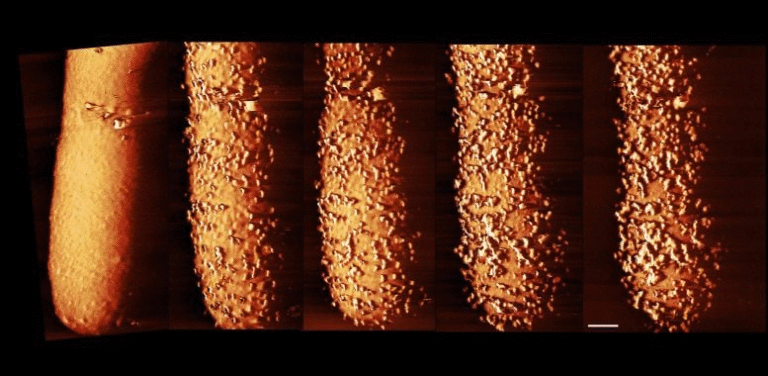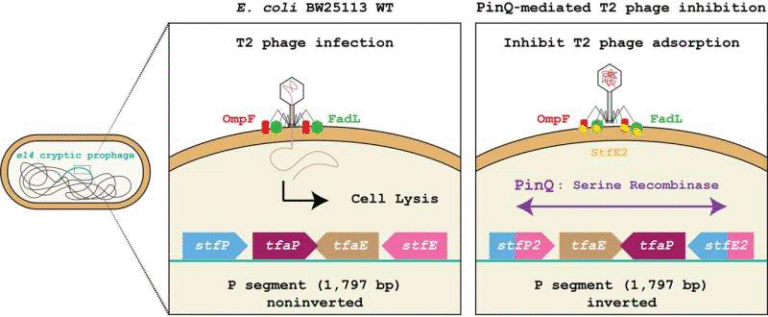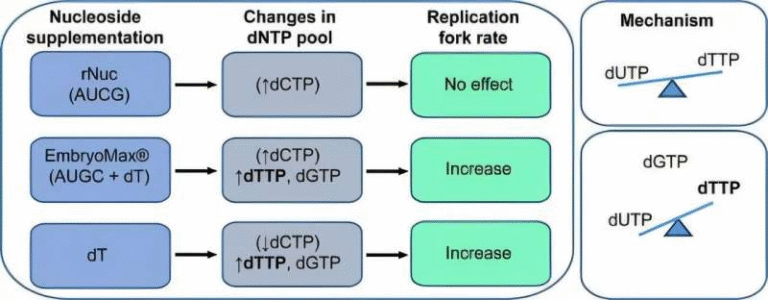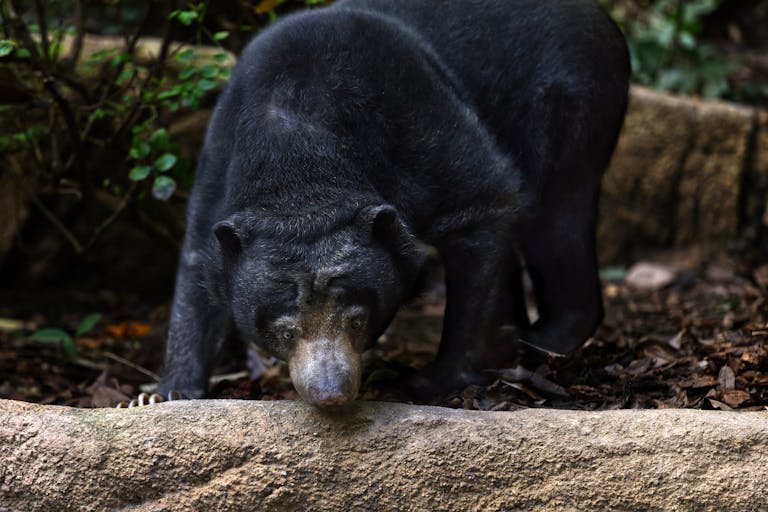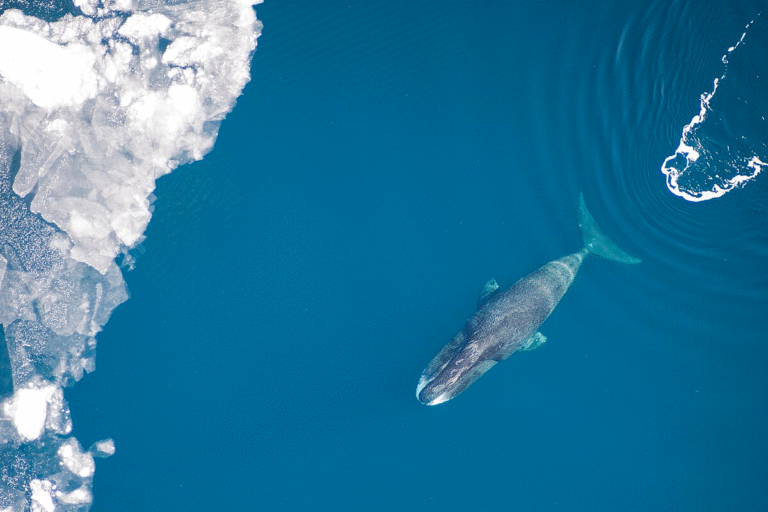Edible Fungus Creates a Natural Waterproof Coating for Paper, Fabric, and Wood

A team of researchers from the University of Maine has found a surprisingly eco-friendly way to make paper, fabric, and even thin wood sheets resistant to water, oil, and grease—by using an edible fungus. Their study, published in Langmuir (American Chemical Society, 2025), shows that this simple biological process could eventually replace many single-use plastic coatings used in everyday materials like paper cups, food packaging, and textiles.
The Core Discovery
The researchers used the “turkey tail” fungus (Trametes versicolor), a well-known edible mushroom species often used in traditional medicine, to grow a thin, impervious film directly on materials like paper, denim, polyester felt, and birch wood veneer.
What’s special about this fungus is its mycelium—the network of thread-like filaments that make up most of a fungus’s body. Mycelium naturally repels water and has a structure that can interlock with fibers in materials like paper or fabric, forming a durable, flexible coating.
The team combined the fungus with cellulose nanofibrils (CNFs)—tiny fibers derived from wood pulp, already known for their strength and ability to block oxygen, oil, and grease. Together, this mix of CNFs and mycelium created a thin biological layer that could resist liquid penetration remarkably well.
How the Coating Was Made
The process was straightforward but required careful biological control. The scientists:
- Prepared a nutrient-rich blend of Trametes versicolor mycelia and cellulose nanofibrils.
- Applied the mixture as a thin layer on materials like denim, polyester felt, birch wood veneer, and two different kinds of paper.
- Allowed the fungus to grow in a warm, humid environment for several days.
- After the growth phase, they heat-treated the samples in an oven for one day. This step inactivated the fungus and dried the coating, leaving a permanent, natural film.
After about three days, the fungus had grown enough to create a strong water barrier. By the fourth day, growth no longer increased the coating’s thickness—roughly the same as a coat of paint.
The Results
The team’s tests showed that the new coating significantly changed how liquids interacted with the materials.
- Water contact angle (CA): The coated surfaces achieved a contact angle of about 139°, meaning water droplets formed beads and rolled off easily. Uncoated materials absorbed water instantly, while CNF-only coatings had a CA of around 27°, offering almost no resistance.
- Water absorption: The fungal-CNF coating absorbed only ~29.6 g/m² of water, compared to ~80.0 g/m² for CNF-only coatings.
- Oil and solvent resistance: The coating successfully blocked n-heptane, toluene, and castor oil, demonstrating strong protection against various non-polar liquids.
- Appearance: The coating added only minimal thickness, though it slightly changed the materials’ color—producing mottled yellow, orange, or tan patterns that might appeal to some users but require optimization for others.
Overall, the experiment confirmed that this fungal-based coating acts as a universal liquid barrier, all while being food-safe, non-toxic, and biodegradable.
Why It Matters
Plastic coatings—like the ones lining disposable cups and food containers—are notoriously difficult to recycle. Even paper products coated with plastic often end up in landfills because separating the two materials is expensive.
This fungal coating offers a bio-based alternative made from renewable resources: an edible fungus and wood-derived nanofibers. The process doesn’t rely on harmful chemicals or petroleum derivatives, and both main ingredients are compostable.
According to the researchers, the long-term vision is to reduce the dependence on single-use plastics by providing industry with sustainable, naturally grown coatings that still perform well under real-world conditions.
The Science Behind Mycelium
To understand why this works so well, it helps to know a bit about mycelium.
Mycelium is the underground body of a fungus, forming a dense network of tiny filaments called hyphae. This structure has remarkable physical and chemical properties. It’s lightweight, flexible, and can be made hydrophobic (water-repelling) because of the proteins and lipids on its surface.
In recent years, scientists have been using mycelium to make:
- Leather-like materials that can replace animal leather.
- Foam-like packaging that substitutes Styrofoam.
- Acoustic and insulation panels for construction.
- Biodegradable textiles for the fashion industry.
The current research adds to this growing list by showing that mycelium can also form waterproof films, potentially revolutionizing coatings for everyday materials.
The Role of Cellulose Nanofibrils
The second key ingredient, cellulose nanofibrils (CNFs), comes from wood fibers that have been broken down into nano-sized filaments. These fibrils form extremely dense, interlocking networks that block gases and oils, making them ideal for barrier coatings.
CNFs have already been explored in packaging and food wraps, but their main weakness is that they absorb water easily. By merging CNFs with mycelium, the researchers created a synergistic material—the CNFs provide structure and strength, while the fungus adds hydrophobicity and self-assembling properties.
Potential Uses and Challenges
This research opens exciting possibilities for sustainable manufacturing, especially in industries like:
- Food packaging: replacing polyethylene linings in paper cups, cartons, and wraps.
- Textiles: waterproofing natural fabrics such as cotton or denim without chemical sprays.
- Wood finishing: providing eco-friendly coatings for furniture or decorative materials.
However, there are challenges ahead:
- Scaling up production from lab experiments to industrial levels will require reliable methods to control fungal growth without contamination.
- The coating may become brittle at low humidity (below 40%), which needs to be improved for commercial use.
- Slight color changes in the treated materials might not suit all products.
- Durability tests—such as resistance to folding, abrasion, sunlight, and long-term moisture—are still needed.
Despite these hurdles, this innovation shows how nature’s own processes can offer cleaner, simpler, and more sustainable solutions than synthetic chemistry alone.
Environmental Significance
The use of living organisms to fabricate materials is part of a broader movement in materials science toward biofabrication—using growth instead of manufacturing. Unlike petroleum-based plastics, which persist for centuries, fungal materials can return safely to the environment.
If adopted commercially, coatings like this could dramatically reduce plastic waste. Consider the billions of coffee cups discarded each year: most are coated with plastic to prevent leakage. A fungus-based waterproof layer could make them fully compostable, drastically cutting landfill waste.
Moreover, the ingredients—wood pulp and edible fungi—are abundant and renewable, supporting a circular economy where waste materials could be repurposed into new sustainable products.
Looking Forward
The next steps for researchers include refining the coating process for industrial scalability, improving flexibility, and testing other fungal species or fiber types for enhanced performance. There’s also interest in exploring whether this coating can be applied through standard industrial techniques like spraying or dipping.
The project highlights a growing recognition in science and engineering: nature already provides the templates for advanced materials. By studying and mimicking natural systems like fungal growth, scientists are discovering low-impact ways to meet human needs without harming the planet.
Research Reference:
Growing Sustainable Barrier Coatings from Edible Fungal Mycelia – Langmuir (2025)
